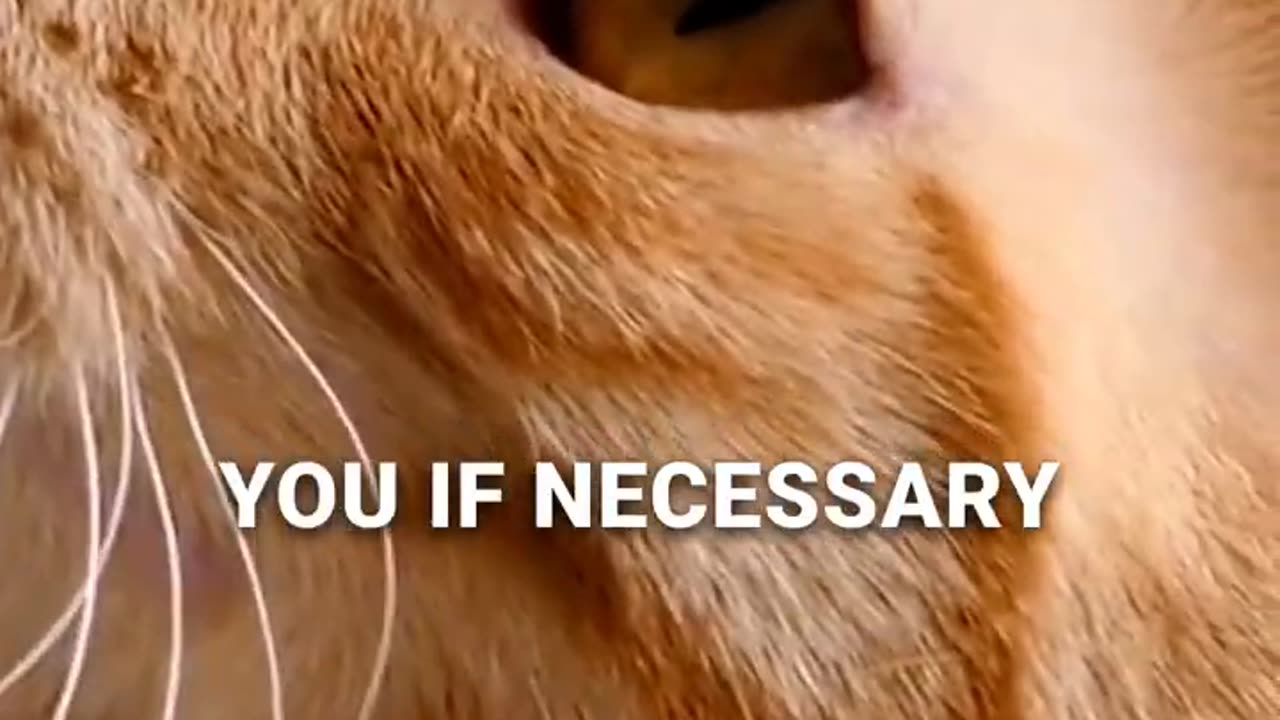Premium Only Content

Cat's Protective Behavior Signs part1
Certainly! Cats can display various signs of protective behavior to safeguard themselves, their territory, or their loved ones. Here are some common signs:
Hissing and Growling: When a cat feels threatened or senses danger, they may emit low-pitched hisses or growls to warn potential intruders to stay away. This behavior is often accompanied by bared teeth and a defensive posture.
Elevated Body Posture: A protective cat may puff up their fur to appear larger and more intimidating to perceived threats. Their tail may also be held upright or bushy, indicating readiness to defend themselves or their territory.
Blocking Access: Cats may position themselves between a perceived threat and their loved ones or territory, physically blocking access to the area they're protecting.
Staring Down Threats: Cats may engage in a prolonged stare-down with potential threats, maintaining eye contact as a way to assert dominance or intimidate intruders.
Aggressive Body Language: Protective cats may exhibit aggressive body language, such as flattened ears, dilated pupils, and a tense body posture. They may also arch their back and raise their hackles to appear more threatening.
Vocal Warnings: In addition to hissing and growling, cats may vocalize loudly to alert their humans to potential dangers or to intimidate intruders. These vocalizations can range from yowls and shrieks to loud, repetitive meows.
Defensive Attacks: If a protective cat feels cornered or threatened, they may resort to defensive attacks to ward off intruders. This can include swatting with their claws, biting, or lunging aggressively.
It's essential to respect a cat's boundaries and not escalate confrontations if they display protective behavior. Understanding their signals and providing a safe and secure environment can help alleviate their stress and prevent potential conflicts.
-
 17:50
17:50
BlackDiamondGunsandGear
8 hours ago $0.69 earnedTeach Me How to Build an AR-15
31K2 -
 9:11
9:11
Space Ice
23 hours agoFatman - Greatest Santa Claus Fighting Hitmen Movie Of Mel Gibson's Career - Best Movie Ever
94.5K36 -
 42:38
42:38
Brewzle
1 day agoI Spent Too Much Money Bourbon Hunting In Kentucky
56.7K7 -
 1:15:30
1:15:30
World Nomac
16 hours agoMY FIRST DAY BACK in Manila Philippines 🇵🇭
43.1K9 -
 13:19
13:19
Dr David Jockers
1 day ago $9.28 earned5 Dangerous Food Ingredients That Drive Inflammation
64.5K15 -
 1:05:13
1:05:13
FamilyFriendlyGaming
23 hours ago $15.35 earnedCat Quest III Episode 8
123K3 -
 10:39
10:39
Cooking with Gruel
1 day agoMastering a Succulent London Broil
79.6K5 -
 22:15
22:15
barstoolsports
1 day agoWhite Elephant Sends Barstool Office into Chaos | VIVA TV
55.2K1 -
 3:30:40
3:30:40
MrNellyGB
13 hours ago🔴LIVE - GRINDING MARVEL RIVALS RANKED! | #RumbleTakeover #RumblePremium
38.1K1 -
 1:23:42
1:23:42
Game On!
1 day ago $8.81 earnedPatrick Mahomes is GOOD TO GO! Chiefs ready to DISMANTLE the Texans!
68.6K7